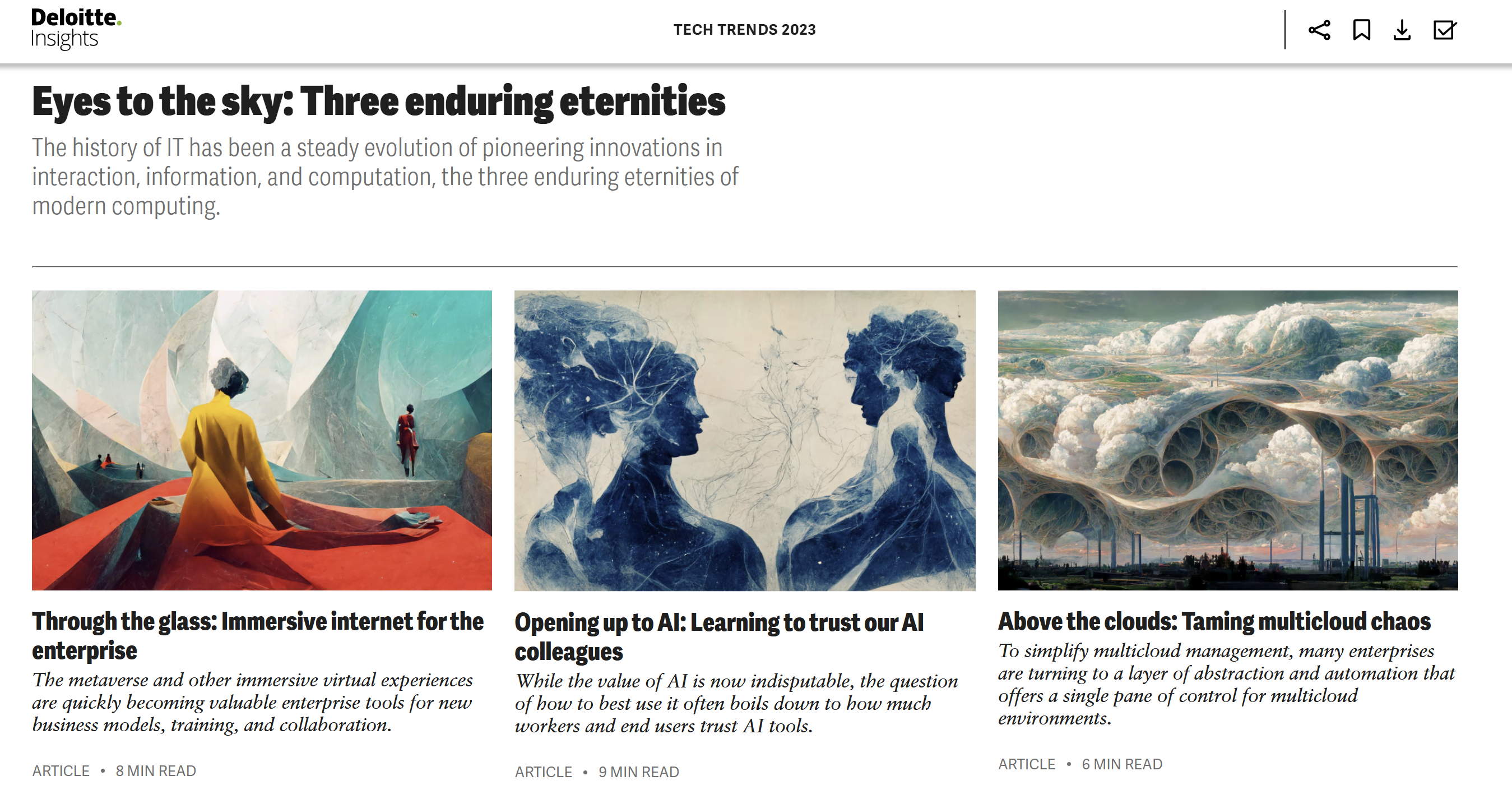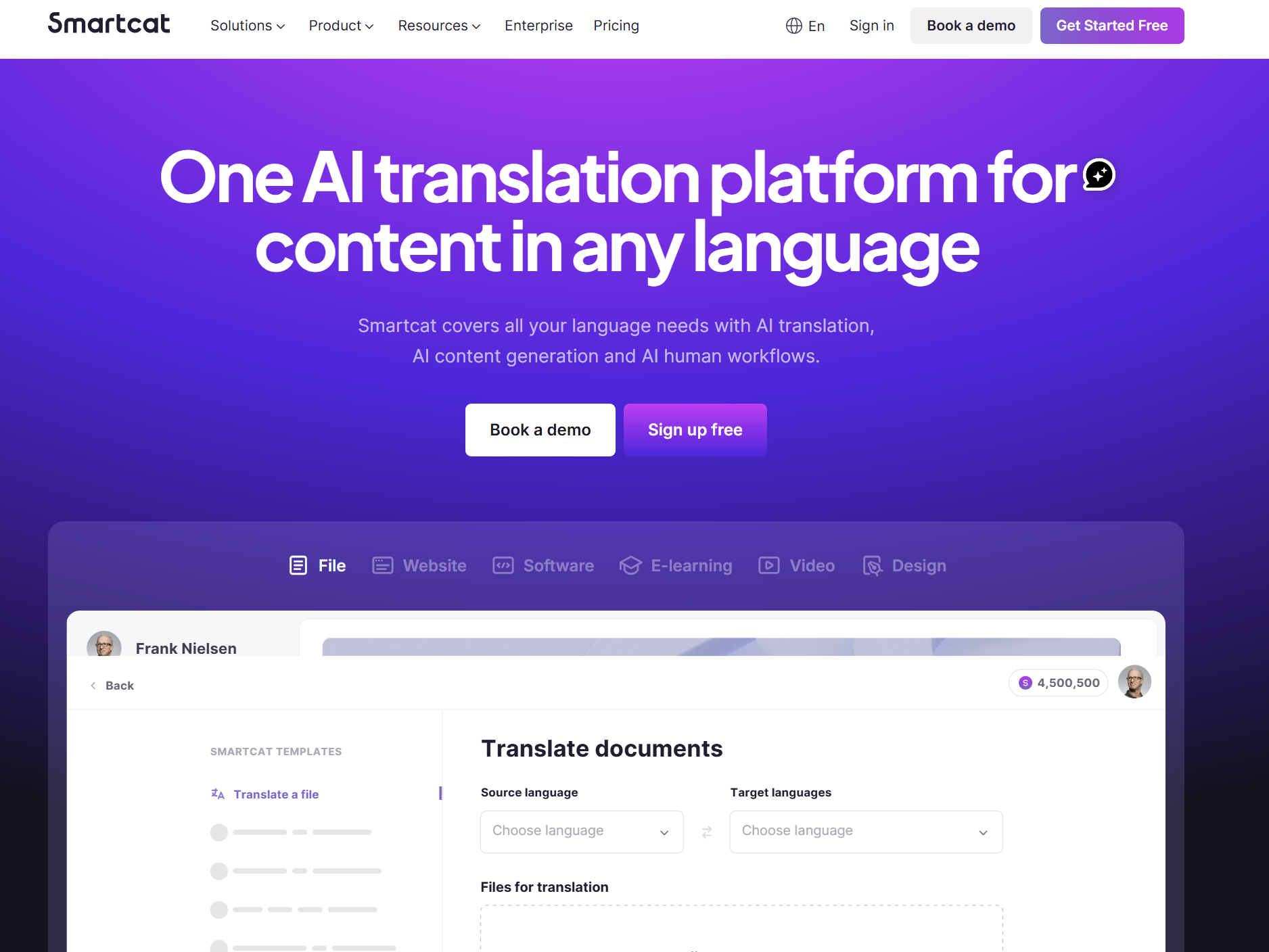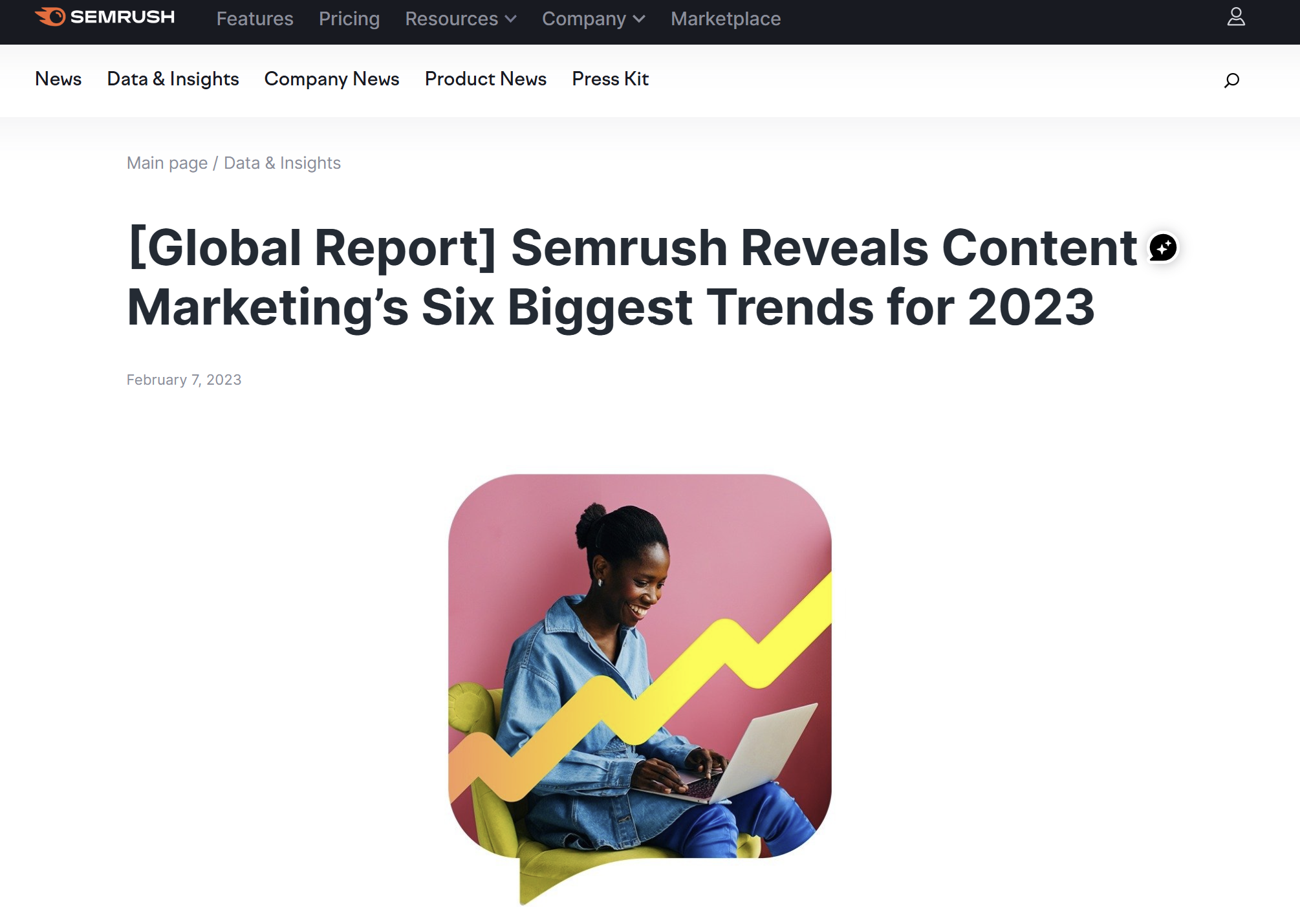The data-backed B2B content marketing strategy checklist to drive leads
In B2B marketing, content plays a key role in keeping your audience engaged, generating leads, and driving conversions. But to create content that really works, you need to know your audience, have a solid strategy, and stay committed to quality.
That’s where B2B content marketing services come in—they can help you craft strategies that are just right for your business.
This article covers 10 important components to build a winning marketing strategy, complete with real examples from top brands. It dives into understanding your audience, creating quality content, and leveraging SEO, social media, and email marketing. By the time you finish reading, you'll have a handy playbook to level up your B2B content marketing game.
Why do B2B content marketing strategies matter?
B2B content marketing strategies are important. They help businesses share their products and services with other businesses. This communication is both informative and engaging.
By creating valuable content, companies can build trust and authority in their industry. This can lead to better relationships with potential clients and customers.
Good content not only increases brand awareness but also brings targeted traffic to a company’s website. This helps generate leads and boosts sales.
An effective B2B content marketing strategy addresses the needs of the intended audience. It offers solutions and insights that can affect buying choices. This is important for long-term business growth and success.
1. Define your target audience
Defining your target audience is crucial for effective content marketing. Without knowing who you're speaking to, your content will miss the mark.
Start by understanding your audience's pain points, needs, and goals. This knowledge allows you to create content that resonates.
Here's how to define your target audience:
Identify the key decision-makers in the buying process.
Analyze their challenges and interests.
Understand their industry and market trends.
Crafting a detailed audience profile sets a solid foundation for your content marketing strategy. Tailoring your message to meet your audience’s needs will improve engagement and lead generation.
Tools & AI solutions for defining your target audience:
Clearbit and ZoomInfo offer enriched B2B firmographic and intent data for precise audience segmentation.
SparkToro helps uncover audience behaviors, interests, and influencers.
AI-driven CRMs like HubSpot or Salesforce Einstein can predict customer personas based on engagement data.
2. Develop a tailored content marketing strategy
Creating a targeted content strategy is key to success in B2B marketing. Your strategy should align with the unique needs of your business and audience. This approach enhances relevance and effectiveness.
Consider the following steps when developing your strategy:
Analyze competitors to identify content gaps.
Set SMART (Specific, Measurable, Achievable, Relevant, Time-bound) goals.
Integrate content marketing with broader business objectives.
A solid strategy ties together all parts of your marketing efforts. It gives you a clear path for creating and sharing content, making sure everything stays consistent and on point across all channels.
Tools & AI solutions for persona development:
Notion AI or ClickUp can help generate strategy outlines and content calendars.
MarketMuse and Content Harmony use AI to identify content gaps and suggest topic clusters.
Semrush Marketing Calendar enables integrated campaign planning with SEO and PPC alignment.
3. Create high-quality, valuable content
The cornerstone of B2B content marketing services is high-quality, valuable content. Sharing helpful information that tackles issues builds trust and makes your brand a reliable resource. When you create quality content, it’s more likely to grab your audience's attention and keep them coming back for more.
To ensure content quality, focus on the following:
Address your audience's pain points.
Provide actionable insights and solutions.
Use clear, concise, and professional language.
Value goes beyond mere information. It’s about delivering insights that help your audience succeed. Over time, consistent valuable content builds credibility and draws leads naturally.
In an example of high-value content, Asana released its “Anatomy of Work” Global Index in 2023. Based on a global survey of 10,624 employees, this data-rich report provides valuable insights into workplace collaboration and productivity trends. This comprehensive content piece positions Asana as a helpful industry resource and engages B2B audiences with original findings.

Tools & AI solutions for content creation
Jasper, Writer, and Copy.ai assist in generating drafts, headlines, and variations.
Grammarly Business and Hemingway Editor improve clarity, tone, and professionalism.
Surfer SEO ensures that content aligns with on-page SEO best practices while staying relevant.
4. Utilize a mix of content types
Mixing up your content types is a great way to connect with different audience preferences. Not everyone takes in content the same way, so providing a variety can really cater to those different styles and boost overall engagement.
Integrate various content formats into your strategy:
Blogs and articles for in-depth information.
Whitepapers and case studies for detailed insights.
Videos and webinars for visual learners.
Trying out different types of content can help you find out what clicks with your audience. This way, you keep things interesting and also expand your reach on various platforms.
Atlassian, a company that makes software for businesses, uses different types of content. This includes blogs, popular podcasts like "Work Check" and "Teamistry," interactive guides, and quizzes on their Work Life hub. This content mix helps Atlassian to connect with its B2B audience through different channels and boost overall engagement.

Tools & AI solutions for multimedia production:
Canva, Gamma AI, and Visme enable creation of infographics and interactive PDFs.
Lumen5 and Pictory turn blog posts into short-form videos using AI.
Figma, Tella, and Loom support dynamic content creation across teams and formats.
5. Establish thought leadership
Establishing your business as a thought leader really helps build trust and credibility. It gives you an edge in the competitive B2B scene. By sharing your expert insights and industry knowledge, you can boost your authority and stand out from the crowd.
Begin by identifying core topics where your business excels. Then, create content that:
Offers unique perspectives on industry challenges.
Provides solutions to common problems.
Highlights innovations and best practices.
Participate in speaking engagements and publish articles in respected journals. This amplifies your thought leadership. Connecting with your audience through blog posts and webinars can boost your reputation as a trusted leader.
Deloitte’s Tech Trends 2023 report exemplifies thought leadership, exploring emerging technology impacts on business with case studies and future projections. Consistently publishing forward-looking insights allows Deloitte to reinforce its reputation as an industry thought leader and trusted advisor.

Tools & AI solutions for thought leadership:
LinkedIn’s Newsletter tool lets brands regularly publish long-form content directly to their network.
SparkToro and BuzzSumo identify trending industry topics for timely insights.
AI summarizers like Feedly AI or Scoop.it curate key thought leadership content in your niche.
6. Optimize for search engines
SEO is crucial for increasing your content's visibility. By optimizing for search engines, you reach a broader audience. Start by conducting thorough keyword research.
Incorporate chosen keywords naturally throughout your content. Ensure they appear in titles, headings, and body text. Also, pay attention to meta descriptions and alt text for images.
Consider the following SEO strategies:
Use targeted keywords strategically.
Optimize page load speed.
Ensure mobile-friendly design.
Regularly update your content with fresh insights and links. This keeps it relevant in search engine rankings. Monitoring SEO analytics helps you understand what works and where improvement is needed.
In late 2024, Lyzr’s marketing team used SEO tools to make their blog better. This led to a 150% increase in organic traffic in just 3 months. Lyzr’s SEO-focused content optimization helped increase impressions by nearly 200%.

Tools & AI solutions for SEO:
Semrush, Ahrefs, and Moz Pro offer powerful keyword research and technical SEO analysis.
Clearscope and Frase.io recommend keyword placement and content scoring.
ChatGPT or Claude can generate SEO-optimized snippets, FAQs, and meta descriptions.
7. Leverage social media for distribution and engagement
Social media platforms are invaluable for content distribution. They help amplify your reach and boost engagement. Each platform offers unique advantages for B2B marketers.
It is important to tailor your content to suit the strengths of each platform. For example, LinkedIn works well for professional networking and sharing industry news. Twitter is better for quick updates and connecting with others.
Maximize your social media strategy by:
Scheduling regular posts for consistency.
Engaging with followers through comments.
Use hashtags to help people find your content.It is important to tailor your content to suit the strengths of each platform.
Social media makes it easy to chat directly with your audience. This kind of interaction really helps build stronger relationships and gets your brand noticed more. Take a look at the engagement metrics to tweak your strategy and make your future content even better.
Tools & AI solutions for social media management:
Buffer, Hootsuite, or Sprout Social schedule and manage posts across platforms.
AI tools like Ocoya and Heyday auto-generate captions and adapt tone per channel.
Taplio uses AI to create LinkedIn post drafts, engagement prompts, and personal brand tracking.
8. Implement lead magnets and email marketing
Lead magnets are great for collecting info from potential customers. They provide something valuable, which encourages users to share their contact details. You can then use this information to boost your email marketing campaigns.
Effective lead magnets include:
E-books and whitepapers with industry insights.
Exclusive webinars or live Q&A sessions.
Access to in-depth case studies or success stories.
Once you capture leads, nurture them through well-crafted email campaigns. Personalize emails based on user behavior and preferences. This approach keeps your audience engaged and moves them down the sales funnel. Use email analytics to track opens, clicks, and conversions, refining your strategy over time.
Epson, a B2B tech hardware company, uses gated premium content like their"Automation 201" white paper to generate leads from prospects in manufacturing automation. By requiring a form fill for download, Epson captures qualified leads. They then add users to their email list for newsletters and product updates with their consent.

Tools & AI solutions for lead magnets and email marketing:
ConvertKit, Mailchimp, and ActiveCampaign manage personalized email workflows.
Unbounce and Typeform create high-converting forms and interactive lead magnets.
AI segmentation tools within Customer.io or Ortto dynamically adjust content by user behavior.
9. Measure and analyze content performance
Checking how your content is doing is super important for fine-tuning your strategy. Use analytics to understand what resonates with your audience. These insights help in making informed decisions and optimizing content.
Key metrics to track include:
Page views and session duration.
Bounce rate and exit pages.
Conversion rates and lead generation.
Keeping an eye on these metrics regularly helps you spot trends and patterns. This data-driven method can show you what topics get people engaged and which formats work best. Adjust your plan based on what you find to improve your results and work smarter. In the end, consistently measuring and analyzing your efforts leads to better content marketing.
Tools & AI solutions for data analysis:
Google Analytics 4, HubSpot, and ContentKing provide real-time content analytics.
Databox or Tableau create interactive dashboards tracking content KPIs.
AI features in Smartly.io or Mutiny highlight which content segments drive conversions.
10. Stay updated with B2B content marketing trends
Keeping up with industry trends is important for B2B content success. It lets you see changes coming and adjust your strategies as needed. Being proactive can really give you an advantage over the competition.
To stay informed, consider:
Subscribing to industry newsletters.
Attending webinars and virtual conferences.
Following influential thought leaders on social media.
Semrush's2023 global content marketing report, based on a survey of over 1,700 marketers. It found that 66% of companies now have a written content strategy. This is up from 57% last year. By publishing this research, Semrush showcases its expertise in the field.

Tools & AI solutions for trend monitoring:
Feedly AI, Exploding Topics, and Google Trends monitor emerging topics and competitors.
G2 and Capterra reviews reveal what tools and formats competitors are adopting.
AI-powered research tools like Consensus and ChatGPT Web Browsing distill the latest B2B insights from reports, podcasts, and articles.
Roll out your content marketing strategy for B2B success
Bringing these strategies into your B2B content marketing can really boost your efforts. Each tactic is important for connecting with prospects and generating leads. By getting to know your audience, producing great content, and keeping up with the latest trends, you can create a solid content marketing strategy.
Founder & CEO at Grow.Repeat
Alina is a B2B marketing leader with 10+ years of experience driving growth through content, SEO, and funnel optimization strategies. Formerly Head of Marketing at Semrush and Growth leader at Smartcat, she's led initiatives that delivered triple-digit pipeline increase and turned websites into scalable revenue engines. Alina specializes in building marketing systems that align with business goals, grounded in data and optimized for long-term impact.
.png)